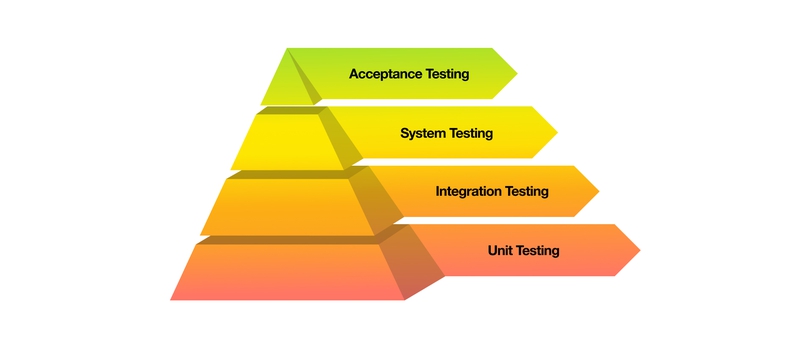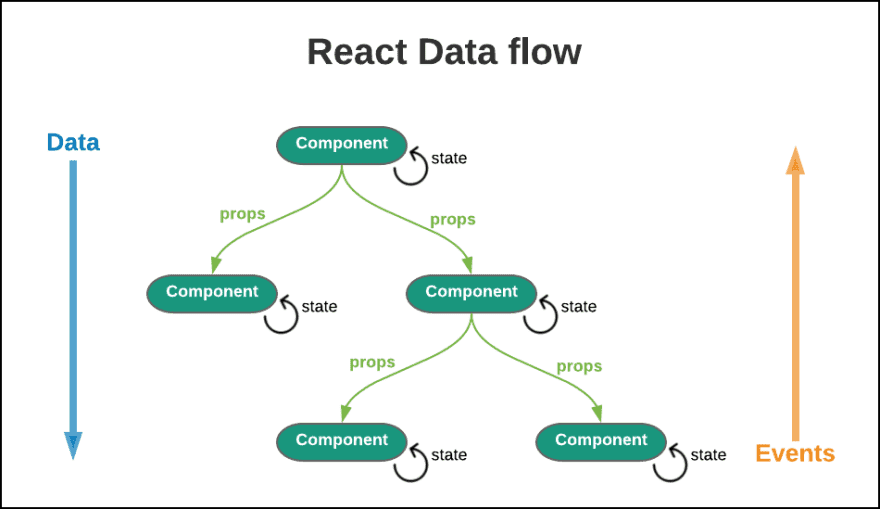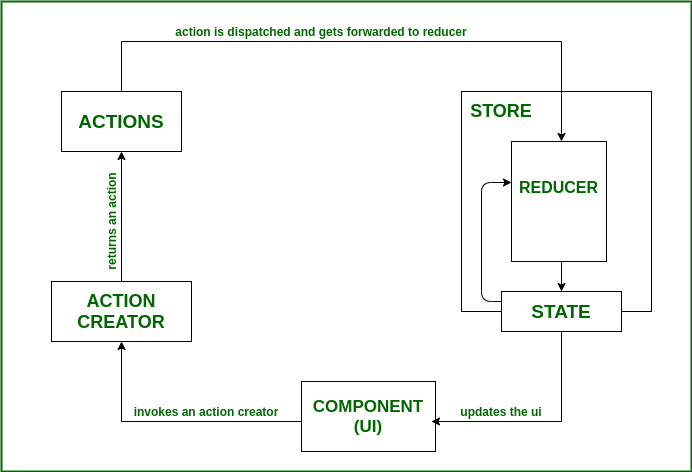The modern React ecosystem, supercharged by tools like Vite and TypeScript, offers unprecedented power for building dynamic user interfaces. However, one of the most persistent challenges developers face is managing server state. The asynchronous, unpredictable nature of data fetched from an API can lead to complex, error-prone code filled with loading spinners, error states, and manual caching logic. This is where TanStack Query (formerly React Query) has emerged as a transformative force, providing a declarative, hook-based approach to fetching, caching, and synchronizing server state. In the latest React Query News, its adoption continues to surge across frameworks from Next.js News to React Native News.
This article goes beyond a simple introduction. We will explore the core concepts and advanced patterns of React Query, but more importantly, we will connect the dots between the frontend request and the backend database operations. By understanding the full data lifecycle—from a user clicking a button in a React component to the SQL transaction executing on the server—you can build truly robust, performant, and resilient applications. We’ll examine practical code examples, including SQL schema design, indexing, and transactions, to provide a holistic view of modern data management.
Understanding the Core of React Query
At its heart, React Query solves a fundamental problem by distinguishing between client state and server state. Client state is ephemeral, synchronous, and fully owned by your application (e.g., form inputs, modal visibility). Server state, however, is persisted remotely, requires asynchronous APIs for fetching and updating, and can be shared and modified by other users, making it potentially “stale” in your client.
From Server State to UI: A Paradigm Shift
Before React Query, developers often shoehorned server state into global state management libraries like Redux. This led to a significant amount of boilerplate for handling loading, success, and error states for every API call. The latest Redux News shows a move towards tools like Redux Toolkit Query to address this, but React Query offers a dedicated, library-agnostic solution. It treats server state as a first-class citizen, automating caching, background refetching, and stale-while-revalidate logic out of the box.
The Backend Counterpart: A Simple SQL Schema
To ground our examples, let’s define the backend data source. Imagine we’re building a news application. Our server would interact with a database containing a table for articles. Here is a simple SQL schema for that table using PostgreSQL.
-- Defines the schema for our news_articles table
CREATE TABLE news_articles (
id UUID PRIMARY KEY DEFAULT gen_random_uuid(),
title VARCHAR(255) NOT NULL,
content TEXT NOT NULL,
author_id UUID REFERENCES authors(id),
status VARCHAR(20) DEFAULT 'draft' CHECK (status IN ('draft', 'published', 'archived')),
published_at TIMESTAMPTZ,
created_at TIMESTAMPTZ NOT NULL DEFAULT NOW(),
updated_at TIMESTAMPTZ NOT NULL DEFAULT NOW()
);
-- A function to automatically update the updated_at timestamp
CREATE OR REPLACE FUNCTION trigger_set_timestamp()
RETURNS TRIGGER AS $$
BEGIN
NEW.updated_at = NOW();
RETURN NEW;
END;
$$ LANGUAGE plpgsql;
CREATE TRIGGER set_timestamp
BEFORE UPDATE ON news_articles
FOR EACH ROW
EXECUTE PROCEDURE trigger_set_timestamp();This schema defines our data structure. Now, let’s see how React Query can fetch data from an API endpoint that serves this content.
The `useQuery` Hook in Action
The `useQuery` hook is the primary tool for fetching and caching data. It requires a unique `queryKey` to identify the data and a `queryFn` that returns a promise (typically an API call).

import { useQuery } from '@tanstack/react-query';
import axios from 'axios';
// Define the shape of our article data with TypeScript
interface Article {
id: string;
title: string;
content: string;
published_at: string;
}
// A reusable custom hook for fetching articles
export const useArticles = () => {
return useQuery<Article[], Error>({
// The queryKey uniquely identifies this query.
// It can be an array for more complex, dependent queries.
queryKey: ['articles', 'list'],
// The queryFn is the function that fetches the data.
// It must return a promise.
queryFn: async () => {
const { data } = await axios.get('/api/articles');
return data;
},
// Optional configuration
staleTime: 1000 * 60 * 5, // Data is considered fresh for 5 minutes
cacheTime: 1000 * 60 * 15, // Data is kept in the cache for 15 minutes
});
};
// Example component usage
function ArticleList() {
const { data, isLoading, isError, error } = useArticles();
if (isLoading) {
return <div>Loading articles...</div>;
}
if (isError) {
return <div>Error: {error.message}</div>;
}
return (
<ul>
{data?.map((article) => (
<li key={article.id}>{article.title}</li>
))}
</ul>
);
}Beyond Fetching: Mutating Data with Confidence
Reading data is only half the story. Applications need to create, update, and delete data. React Query provides the `useMutation` hook for these side effects, along with powerful mechanisms to ensure the UI stays synchronized with the backend.
Introducing the `useMutation` Hook
The `useMutation` hook is designed for any function that modifies server-side data. It provides helper states like `isPending` and `isSuccess` and, most importantly, callbacks to orchestrate UI updates after the mutation completes.
Keeping UI in Sync: Query Invalidation
After a user creates a new article, the list of articles they see is now stale. Instead of manually refetching, we can use React Query’s `QueryClient` to invalidate the relevant queries. This tells React Query that the data associated with a specific `queryKey` is out of date, triggering an automatic, seamless refetch in the background.
import { useMutation, useQueryClient } from '@tanstack/react-query';
import axios from 'axios';
// Define the payload for creating a new article
interface CreateArticlePayload {
title: string;
content: string;
authorId: string;
}
// A custom hook for the creation mutation
export const useCreateArticle = () => {
const queryClient = useQueryClient();
return useMutation({
mutationFn: (newArticle: CreateArticlePayload) => {
return axios.post('/api/articles', newArticle);
},
// This function runs on success
onSuccess: () => {
// Invalidate the query for the list of articles.
// This will cause any component using `useArticles` to refetch.
console.log('Successfully created article. Invalidating queries...');
queryClient.invalidateQueries({ queryKey: ['articles'] });
},
onError: (error) => {
// Handle potential errors, e.g., show a toast notification
console.error('Failed to create article:', error);
},
});
};
// Example component with a form
function CreateArticleForm() {
const { mutate, isPending } = useCreateArticle();
const handleSubmit = (event: React.FormEvent) => {
event.preventDefault();
// Logic to get form data...
const formData = { title: 'New Post', content: 'Hello world!', authorId: 'user-123' };
mutate(formData);
};
return (
<form onSubmit={handleSubmit}>
{/* Form fields go here */}
<button type="submit" disabled={isPending}>
{isPending ? 'Submitting...' : 'Create Article'}
</button>
</form>
);
}The Backend Transaction: Ensuring Data Integrity
When our `useMutation` hook sends a `POST` request, the server must handle it reliably. A simple `INSERT` statement might suffice, but what if creating an article also involved updating a user’s post count or adding tags in a separate table? If one step fails, we could be left with inconsistent data. This is where SQL transactions are critical. A transaction bundles multiple database operations into a single, all-or-nothing unit.
-- An example of a transaction for creating a new article and a related log entry
BEGIN;
-- Statement 1: Insert the new article
INSERT INTO news_articles (title, content, author_id, status)
VALUES ('A Guide to React Query', 'This is the content...', 'author-uuid-123', 'published')
RETURNING id; -- RETURNING id can be useful to send back to the client
-- Statement 2: Insert a corresponding audit log entry
INSERT INTO audit_logs (user_id, action, entity_id)
VALUES ('user-uuid-456', 'create_article', (SELECT id FROM news_articles WHERE title = 'A Guide to React Query'));
-- If both statements succeed, commit the changes permanently
COMMIT;
-- If any statement had failed, the entire transaction would be rolled back automatically
-- or you could explicitly call ROLLBACK;Advanced Patterns for Complex Scenarios
React Query’s capabilities extend far beyond simple fetching and invalidation. It provides elegant solutions for complex UI patterns like optimistic updates and pagination, which can dramatically improve the user experience.
Optimistic Updates: A Seamless User Experience
Optimistic updates make an application feel instantaneous. When a user performs an action (e.g., deleting an item), the UI updates immediately, *assuming* the server request will succeed. React Query manages the complexity of rolling back the UI change if the request ultimately fails.

export const useDeleteArticle = () => {
const queryClient = useQueryClient();
return useMutation({
mutationFn: (articleId: string) => {
return axios.delete(`/api/articles/${articleId}`);
},
// onMutate is called before the mutation function is fired
onMutate: async (deletedArticleId) => {
// Cancel any outgoing refetches to prevent them from overwriting our optimistic update
await queryClient.cancelQueries({ queryKey: ['articles'] });
// Snapshot the previous value
const previousArticles = queryClient.getQueryData<Article[]>(['articles', 'list']);
// Optimistically update to the new value
if (previousArticles) {
queryClient.setQueryData(
['articles', 'list'],
previousArticles.filter((article) => article.id !== deletedArticleId)
);
}
// Return a context object with the snapshotted value
return { previousArticles };
},
// If the mutation fails, use the context returned from onMutate to roll back
onError: (err, deletedArticleId, context) => {
if (context?.previousArticles) {
queryClient.setQueryData(['articles', 'list'], context.previousArticles);
}
},
// Always refetch after error or success to ensure server and client state are in sync
onSettled: () => {
queryClient.invalidateQueries({ queryKey: ['articles'] });
},
});
};Optimizing Performance with Database Indexing
As our `news_articles` table grows, fetching data can become slow, especially with filtering or sorting. A frontend feature like “show articles by author” or “sort by `published_at`” will translate to a `WHERE` or `ORDER BY` clause in the SQL query. Without a database index, the database would have to perform a full table scan, which is highly inefficient. Creating an index provides a fast lookup mechanism. This is a crucial backend optimization that directly impacts frontend performance and user experience.
-- Create an index on the author_id column to speed up queries that filter by author
-- e.g., SELECT * FROM news_articles WHERE author_id = 'some-uuid';
CREATE INDEX idx_articles_author_id ON news_articles(author_id);
-- Create a composite index for queries that filter by status and sort by published_at
-- e.g., SELECT * FROM news_articles WHERE status = 'published' ORDER BY published_at DESC;
CREATE INDEX idx_articles_status_published_at ON news_articles(status, published_at DESC);Best Practices and Integrating with the React Ecosystem
To leverage React Query effectively, it’s important to adopt best practices and understand how it fits within the broader ecosystem of tools like Vite News, React Router News, and various state management libraries.
State Management Synergy: React Query with Zustand or Redux
A common point of confusion is whether React Query replaces state management libraries. The answer is no; they are complementary. The latest Zustand News and Recoil News highlight a trend towards simpler client state management. The best practice is to:
- Use React Query for server state: All data that comes from an API.
- Use Zustand, Jotai, or Redux for global client state: Things like theme settings, authentication status, or complex form state that needs to be shared across the app.
This separation of concerns leads to a cleaner, more maintainable architecture.
Testing Your Data-Fetching Logic

Testing components that use React Query is straightforward. Using tools from the React Testing Library News sphere, you can wrap your component in a `QueryClientProvider` within your test setup. This allows you to control the query client and mock API responses, ensuring your tests are fast and reliable. For end-to-end validation, frameworks like Cypress News and Playwright News can test the entire flow, from UI interaction to data persistence.
Framework Considerations: Next.js and React Native
TanStack Query is framework-agnostic. Its integration with Next.js News is particularly powerful, enabling sophisticated patterns for Server-Side Rendering (SSR) and Static Site Generation (SSG) through hydration. Similarly, in the mobile world, the latest Expo News and React Native News confirm that the exact same hooks (`useQuery`, `useMutation`) work seamlessly, providing a unified data-fetching strategy for web and mobile platforms.
Conclusion: A Unified Approach to Data
React Query has fundamentally improved how we handle server state in React applications. By providing a robust, cache-aware, and declarative API, it eliminates mountains of boilerplate and makes our components cleaner and more resilient. As we’ve seen, its true power is unlocked when we consider the entire data flow. Understanding how a `useMutation` hook on the frontend corresponds to a safe, transactional SQL operation on the backend, and how a paginated `useQuery` can be accelerated by a simple `CREATE INDEX` statement, is the key to building truly professional-grade applications.
As you build your next project with React, whether using Gatsby News for a static site or Blitz.js News for a full-stack framework, consider adopting React Query not just as a fetching library, but as the central nervous system for your application’s server state. This holistic, full-stack perspective will empower you to write code that is not only efficient and bug-free but also a delight to maintain.











